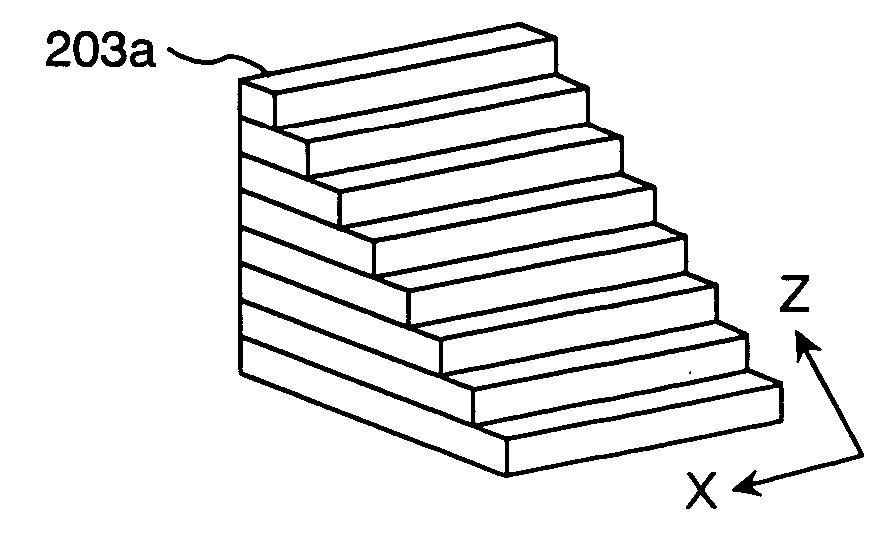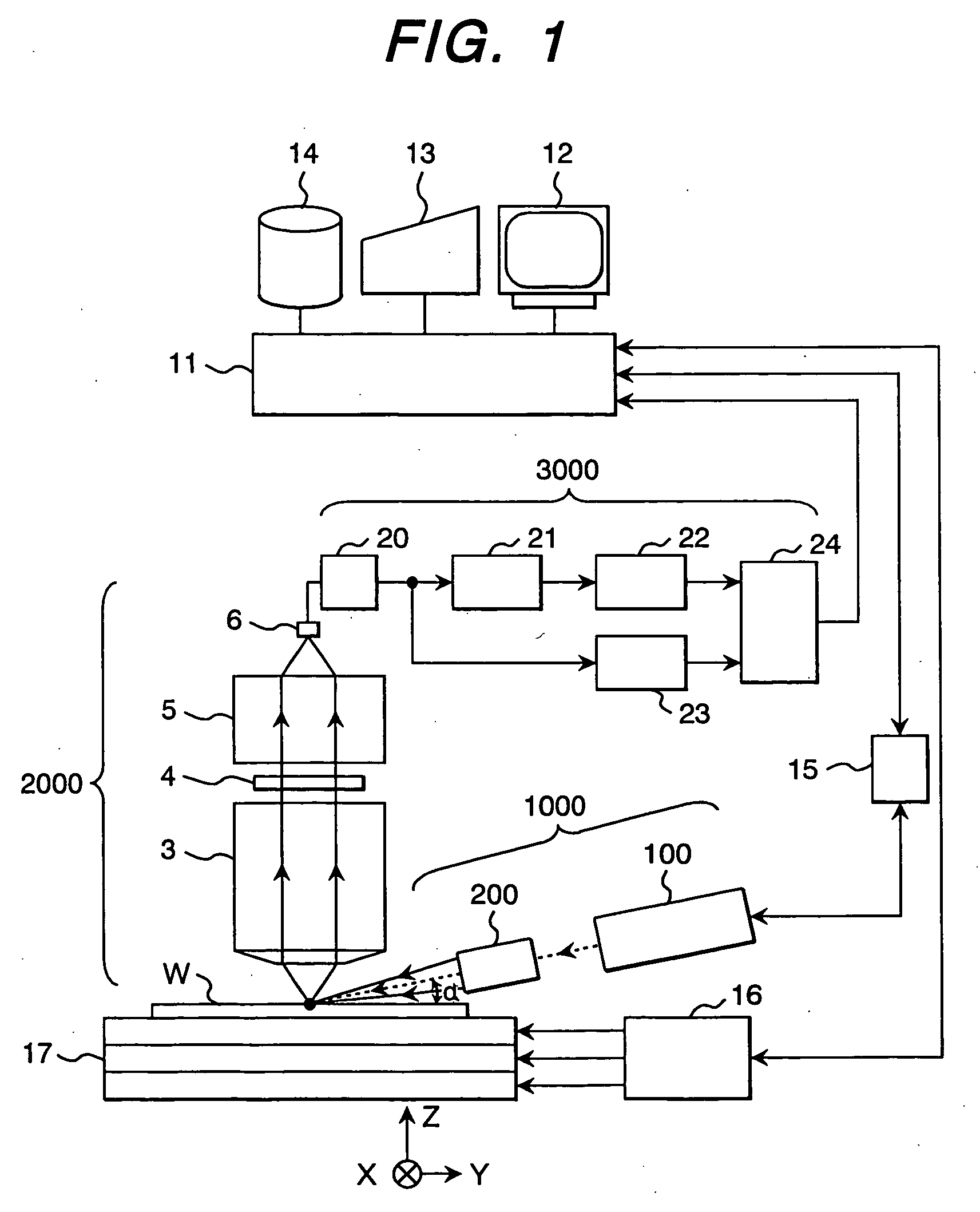Method and apparatus for detecting defects
a defect detection and defect technology, applied in the direction of optically investigating flaws/contamination, semiconductor/solid-state device testing/measurement, instruments, etc., can solve the problems of difficult to distinguish fine-structure foreign particles or microdefects from fine-structured foreign particles, edge roughness of workpiece patterns, etc., to improve the sensitivity of defect detection, reduce the coherence of laser light, and simple configuration
- Summary
- Abstract
- Description
- Claims
- Application Information
AI Technical Summary
Benefits of technology
Problems solved by technology
Method used
Image
Examples
first embodiment
[0050] A first embodiment of the present invention will be described with reference to FIGS. 1 to 8.
[0051] First, an example of a defect detection apparatus for detecting foreign particles and pattern defects on a semiconductor wafer is shown in FIG. 1. The defect detection apparatus is constructed so as to include: an irradiation optical system 1000, one feature of the present invention; a detection optical system 2000; an image processing unit 3000; a light source driver 15 that drives a laser light source 100; a main controller unit 11 that connects a display 12, an arithmetic device 13, a storage device 14, and an input / output section (network included) not shown, and controls the entire apparatus; an X-Y-Z stage 17 for resting thereon, for example, a semiconductor wafer W as an object to be subjected to defect detection, and moving the object W in X-, Y-, and Z-directions; and an X-Y-Z stage driver that conducts driving control of the X-Y-Z stage 17, based on commands from the...
second embodiment
[0072] Next, a second embodiment of the present invention will be described using FIGS. 9 to 23a, 23b. The second embodiment differs from the first embodiment in that an irradiation system 200b in irradiation optical system 1000 uses a single-mode fiber bundle (single-mode fiber group) 300A whose optical path length is changed to reduce coherence.
[0073]FIG. 9 shows single-mode fiber bundle 300A which, when a high-coherence laser light source is used as a light source 100 to emit UV laser light or DUV laser light, maintains temporal (time-wise) coherence intact and reduces only spatial coherence. That is to say, single-mode fibers 300a of the single-mode fiber bundle 300A are each provided with an optical path length difference greater than a laser coherence length, and exit beams from the single-mode fibers 300a become mutually incoherent beams. Therefore, low-coherence light illumination using the laser that is the coherent light source becomes possible by irradiating an object W ...
PUM
 Login to View More
Login to View More Abstract
Description
Claims
Application Information
 Login to View More
Login to View More - R&D
- Intellectual Property
- Life Sciences
- Materials
- Tech Scout
- Unparalleled Data Quality
- Higher Quality Content
- 60% Fewer Hallucinations
Browse by: Latest US Patents, China's latest patents, Technical Efficacy Thesaurus, Application Domain, Technology Topic, Popular Technical Reports.
© 2025 PatSnap. All rights reserved.Legal|Privacy policy|Modern Slavery Act Transparency Statement|Sitemap|About US| Contact US: help@patsnap.com



